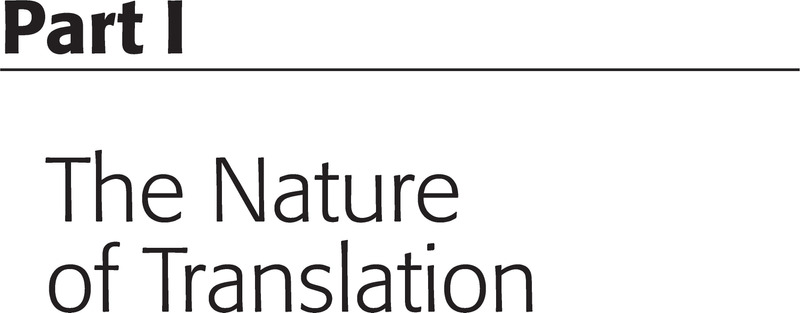Book contents
- The Cambridge Handbook of Translation
- Cambridge Handbooks in Language and Linguistics
- The Cambridge Handbook of Translation
- Copyright page
- Dedication
- Contents
- Figures
- Tables
- Contributors
- Acknowledgements
- Introduction
- Part I The Nature of Translation
- Part II Translation in Society
- Part III Translation in Company
- Part IV Translation in Practice: Factual Genres
- Part V Translation in Practice: Arts
- Part VI Translation in History
- Index
- References
Part I - The Nature of Translation
Published online by Cambridge University Press: 10 March 2022
- The Cambridge Handbook of Translation
- Cambridge Handbooks in Language and Linguistics
- The Cambridge Handbook of Translation
- Copyright page
- Dedication
- Contents
- Figures
- Tables
- Contributors
- Acknowledgements
- Introduction
- Part I The Nature of Translation
- Part II Translation in Society
- Part III Translation in Company
- Part IV Translation in Practice: Factual Genres
- Part V Translation in Practice: Arts
- Part VI Translation in History
- Index
- References
Summary

- Type
- Chapter
- Information
- The Cambridge Handbook of Translation , pp. 11 - 116Publisher: Cambridge University PressPrint publication year: 2022



